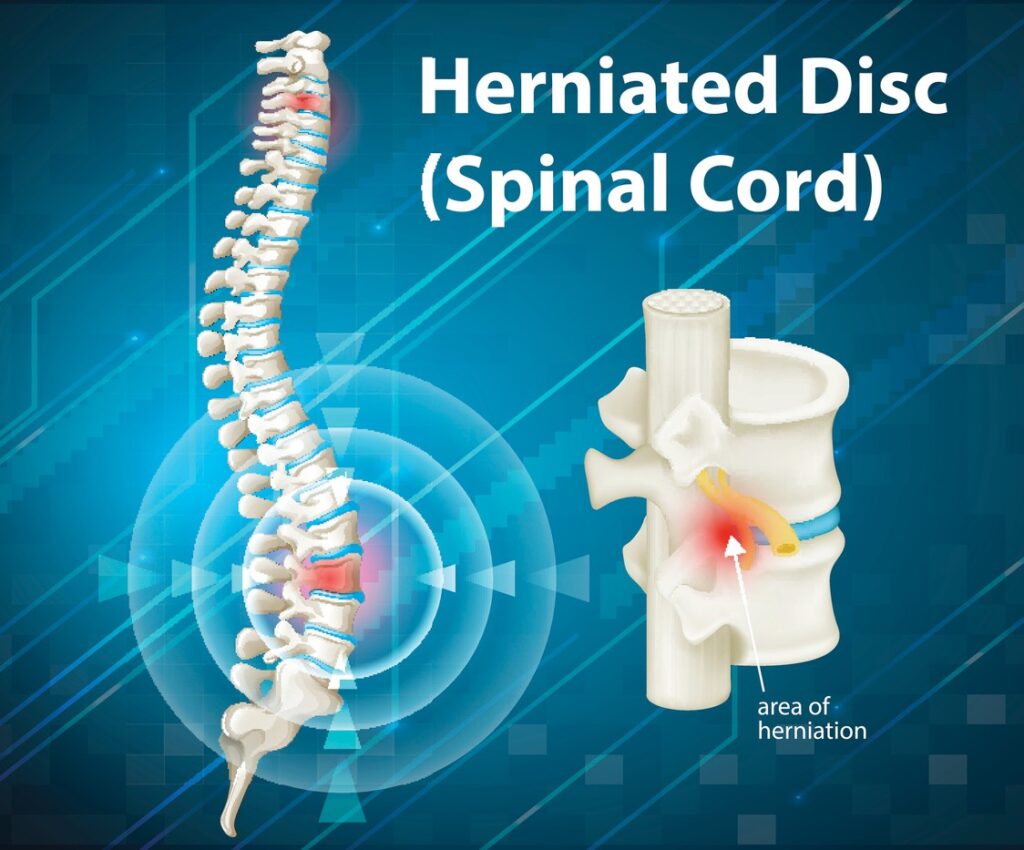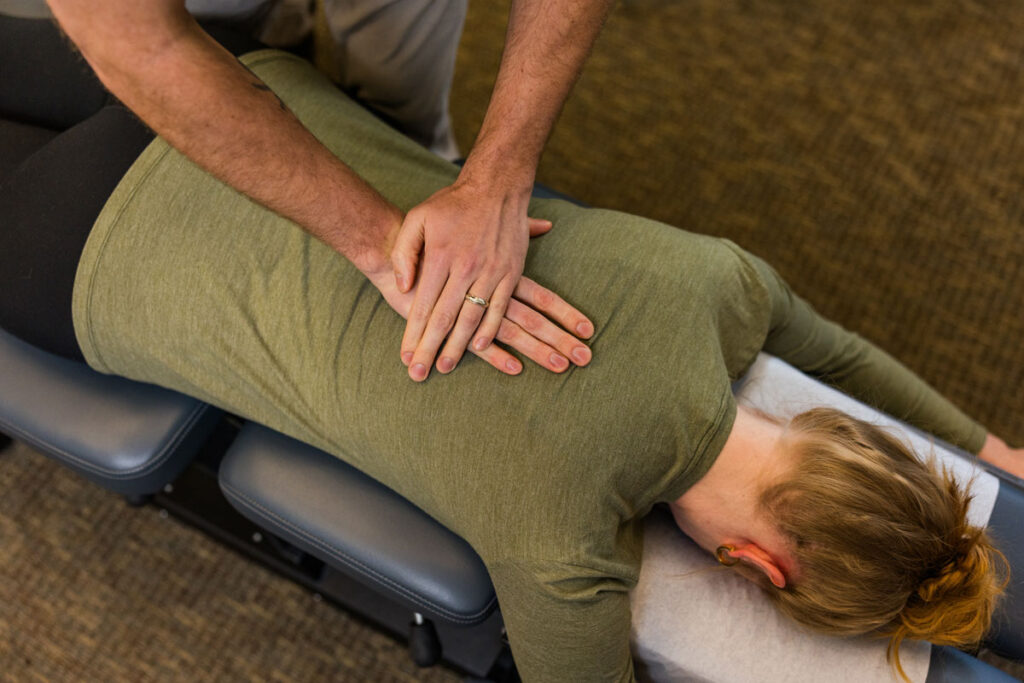Beyond the Backache: How Spinal Decompression Transformed Herniated Disc Healing
The human spine is a marvel of nature’s engineering, designed to offer support, flexibility, and protection to our nervous system. However, due to various reasons, it can sometimes run into problems, including the notorious herniated disc. For those seeking relief from chronic pain, non-surgical spinal decompression therapy offers a potential solution. Let’s dive into this subject.
What is Non-Surgical Spinal Decompression?

Non-surgical spinal decompression is a type of motorized traction therapy that can help relieve back and neck pain. Rather than relying on surgical interventions, this conservative treatment method uses a special table to stretch and decompress the spine, allowing the spinal discs to heal.
Key features of non-surgical spinal decompression:
- Non-invasive: Unlike surgical methods, there is no need for incisions or invasive procedures.
- Targeted: The treatment specifically targets the damaged or affected spinal discs.
- Controlled: The traction applied is precise and controlled, reducing the risk of injury or discomfort.
Spinal decompression therapy is designed primarily for individuals experiencing persistent neck or lower back pain due to herniated, bulging, or degenerative disc disease. While it offers hope to many suffering from chronic discomfort, not everyone is a suitable candidate. Ideal candidates are those with disc-related problems causing symptoms like sciatica or spinal stenosis. Additionally, those who have failed to find relief from traditional treatments such as physiotherapy, pain medications, or even surgeries might benefit from this non-invasive approach. However, certain individuals are generally considered ineligible for the therapy, including pregnant women, patients with severe osteoporosis, those with spinal tumors or infections, or individuals with certain conditions like ankylosing spondylitis. Patients with artificial implants or hardware in the spine, such as metal screws or plates, might also be excluded. As always, a thorough evaluation by a healthcare professional is essential to determine the appropriateness of spinal decompression therapy for each unique individual.
How Spinal Decompression Therapy Works
The principle behind this therapy hinges on the application of controlled mechanical traction to the spine, aimed at creating a negative intradiscal pressure. By gently stretching the spinal column, spaces between the vertebrae increase, which results in a decrease in the pressure exerted on the affected discs. As this pressure reduces, the protruding or bulging discs, often the culprits behind the pain due to nerve impingement, can retract back to their normal positions.
The retraction not only alleviates the immediate pain by minimizing nerve compression, but it also fosters an environment conducive to healing by creating a vacuum effect. This negative pressure draws essential nutrients, oxygen and blood flow into the disc, aiding in the restoration of damaged discs and promoting natural healing. Furthermore, by continually decompressing and relaxing the spine, the treatment ensures that the spinal discs remain well-hydrated and receive adequate nutrient supply.
Over time, with repeated sessions, spinal decompression therapy can lead to significant pain relief and restoration of normal disc function without resorting to invasive surgical interventions. Given its holistic approach to addressing the root cause of disc-related issues and the subsequent nerve compression, spinal decompression therapy stands out as a promising solution for many individuals in their quest for pain relief and spinal health.
Symptoms of a Herniated Disc

A herniated disc, often referred to as a slipped or ruptured disc, happens when the soft inner portion of a spinal disc protrudes out through the tough outer layer. This can irritate nearby spinal nerves and lead to pain, numbness, or weakness in an arm or leg. It’s crucial to recognize the symptoms early for effective treatment.
Common symptoms include:
- Pain: This can be localized or radiate to other parts of the body depending on the location of the herniation. For instance, a herniated disc in the lower back might cause pain in the buttocks, thigh, or calf.
- Numbness or tingling: Patients might feel these sensations in the body part served by the affected nerves.
- Weakness: Muscles served by the affected nerves tend to weaken, affecting your ability to hold or lift items.
- Unexplained muscle stiffness or cramping.
- Localized spinal discomfort.
Not everyone with a herniated disc will have these symptoms. It’s possible for a herniated disc to remain asymptomatic unless it presses on a spinal cord nerve.
Benefits of Spinal Decompression for a Herniated Disc
If you’ve been diagnosed with a herniated disc or suspect you might have one, spinal decompression therapy can offer several benefits and significant improvement with your lower back pain.
Key advantages include:
- Pain relief: By repositioning the herniated disc material and reducing its pressure on the nerves, many patients experience significant pain relief.
- Increased mobility: As the pain diminishes, patients often find they can move more freely and comfortably.
- Reduced reliance on medications: As a natural healing method, spinal decompression can reduce or even eliminate the need for pain medications, which often come with side effects.
- Avoiding surgery: In many cases, spinal decompression can be an effective alternative to spinal surgery, saving patients from potential surgical complications and lengthy recovery times.
- Improved quality of life: Beyond physical benefits, the reduction in pain and discomfort can greatly improve a person’s overall well-being and lifestyle.
Spinal Decompression Treatment Plan for a Herniated Disc

A typical chiropractic treatment plan is personalized based on the severity of the herniation and the patient’s unique needs. However, some general components are usually present.
A typical treatment plan might include:
- Initial Assessment: Before starting any treatment, a thorough evaluation is conducted. This often involves physical examinations, reviewing medical history, and possibly imaging tests.
- Frequency of Sessions: Typically, patients might undergo 15-30 therapy sessions over a span of 4-6 weeks. Each session of chiropractic adjustments can last anywhere from 30 to 45 minutes.
- Positioning: Patients are comfortably positioned on a motorized table, with harnesses around their pelvis and trunk.
- Treatment: The chiropractor controls the device, customizing the force and angle of disc distraction. This ensures optimal and painless decompression.
- Supplemental Therapies: Often, spinal decompression is combined with other treatments like heat or cold therapy, electrical stimulation, or ultrasound to enhance the healing process.
Visit Bend Total Body Chiropractic for Pain Relief
Chiropractic spinal decompression therapy presents a compelling option for those grappling with the pain and discomfort of a herniated disc. By understanding what this therapy entails and its potential benefits, patients can make informed decisions about their spinal health. As with any treatment, it’s essential to consult with your chiropractor to determine the best course of action for your individual circumstances. Make an appointment today for a chiropractic consultation and get you on the road to a healthy, pain-free life.

